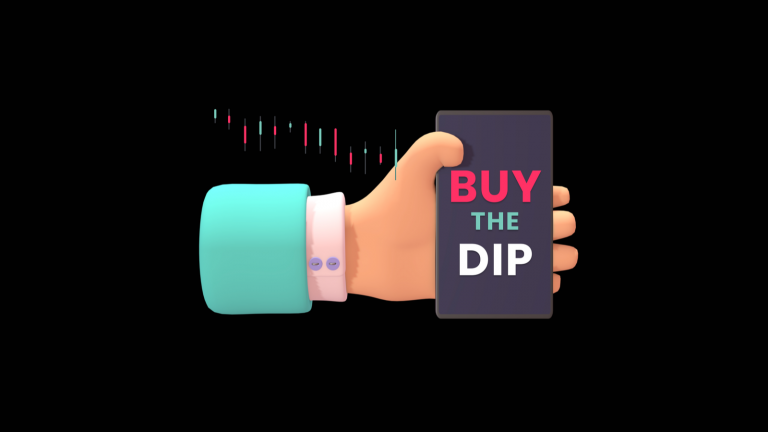Sometimes the market whispers. Other times, it shouts.
Yesterday, the market didn’t whisper — it roared.
A Zweig Breadth Thrust — one of the rarest and most reliable technical indicators in market history — just triggered. If you know your market history, you understand how big this is. If not, buckle up.
Because this isn’t just any buy-the-dip signal.
It’s the mother of all buy-the-dip signals, and it just lit up the tape.
What’s the Zweig Breadth Thrust?
The late Marty Zweig, one of the most respected market strategists of the 20th century, developed the indicator. It flags the moment when bearish sentiment burns out and a powerful bullish reversal is underway.
Here’s how it works:
- It tracks the 10-day moving average of advancing stocks on the NYSE.
- When that average surges from below 40% to above 61.5% in 10 days or fewer, the signal fires.
That’s exactly what happened yesterday.
Why does this matter?
Since World War II, the Zweig Breadth Thrust has triggered only 18 times. After each one:
- The market was higher six months later 100% of the time.
- The market was higher 12 months later 100% of the time.
The average 12-month return after a Zweig Thrust: +25%.

Let that sink in: 18 for 18. Zero false positives. Massive gains.
Do you see why I call this the mother of all buy-the-dip signals?
But it’s not just the Zweig Breadth Thrust flashing green. A perfect storm of bullish technical signals is forming right now — all pointing in the same direction.
Let’s run through the recent fireworks…
70% Advancers Signal
Over the past 10 trading sessions, six have seen more than 70% of stocks on the NYSE close higher.
How rare is that?
Going back to 1950, it’s happened just seven times before.
And after each of those? You guessed it:
- Stocks were higher six months and 12 months later.
- The average 12-month gain was +23%.
This is what it looks like when broad-based institutional buying reenters the market. Not just a few mega-caps dragging the tape — the whole market is lifting.

Bollinger Band Reversal
Two weeks ago, more than 70% of S&P 500 stocks were trading below their lower Bollinger Band.
Bollinger Bands are technical indicators that measure price volatility and extreme conditions. When stocks trade below the lower band, they’re considered oversold — often excessively so.
Fast forward to today: not a single stock in the S&P 500 is below its lower Bollinger Band.
That flip from deep oversold to full recovery has happened only a handful of times since 1990. And every time:
- Stocks were higher 12 months later.
- Average gain? +16%.
That’s a powerful whiplash reversal — and it’s happening right now.

Breakaway Momentum on the Horizon
The Breakaway Momentum Breadth Thrust — perhaps the only signal as legendary as Zweig’s — is on the verge of triggering, too.
Here’s the setup:
- It triggers when the 10-day ratio of advancing to declining stocks exceeds 1.97.
- Historically, this has happened only a couple dozen times since World War II.
- Stocks went up 12 months later 95% of the time.
- Average return? +21%.
As of today, we are this close to triggering the Breakaway Momentum Breadth Thrust. Especially considering the following:
- If we get 1,660 net advancers today, it triggers.
- Or if we get 3,030 net advancers across today and Monday, it also triggers.
That’s within reach — and the market momentum says it’s possible.

The Fundamentals Are Lining Up
The best technical signals come when they’re confirmed by the macro picture. That’s what we’re seeing now.
This is not some technical bounce in a vacuum. The fundamentals are shifting fast — and in bulls’ favor.
Trade war tensions, for one, are thawing quickly. The Liberation Day tariffs shocked the market in early April. But since then, we’ve seen tariff pauses, widespread exemptions, and a significant softening in trade rhetoric.
As a result, the average effective U.S. tariff rate has dropped from 27% to about 20% in three weeks. Some trade deals appear on the way in May with Japan, India, Vietnam, and others, while a China trade deal looks possible in May or June — and that could push the average tariff rate down toward 10%.
The direction of trade policy is, and should remain, decisively positive.
Meanwhile, we are starting to hear chatter of the Fed getting back into rate-cutting mode.
Cleveland Fed President Beth Hammack said this week that the Fed could cut rates in June if the data is clear. We think it will be — especially with trade easing and inflation softening. That sets the stage for a rate-cutting cycle into year-end.
And, maybe most importantly, earnings are holding up.
The first-quarter earnings season is off to a strong start. Last night, for example, Alphabet (GOOG) reported blowout results — showing that AI spending, ad demand, and cloud strength are all alive and well. Plus, early reports from AI infrastructure companies like Texas Instruments (TXN) and Lam Research (LRCX) have been bullish, too. Same with early reports from AI software firms like ServiceNow (NOW).
Final Word
So let’s recap.
- Zweig Breadth Thrust just triggered → 100% success rate since World War II
- 70% Advancers Signal → last seven times = all gains
- Bollinger Band Reversal → consistent 16%+ gains
- Breakaway Momentum Thrust nearly there → 95% success rate
- Tariffs falling, Fed pivoting, earnings strong
This is what market liftoffs look like.
This is Wall Street’s version of “all systems go.”
If you’ve been waiting for clarity — this is it.
The technicals say “buy.” The fundamentals say “buy.” The tape says “buy.”
The Zweig Breadth Thrust is a once-every-few-years gift to investors — and when it hits, history tells us you want to be long and strong.
The last time we saw it was in March 2023, which was right before the market launched into the AI boom.
Now we’re seeing it again, with even more fuel.
Don’t overthink this.
The opportunity is here. The signal has fired.
Looking for the best stocks to buy on the dip?
Click here to learn about some of our favorite picks.
On the date of publication, Luke Lango did not have (either directly or indirectly) any positions in the securities mentioned in this article.
Questions or comments about this issue? Drop us a line at langofeedback@investorplace.com.

